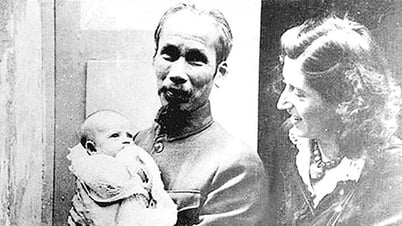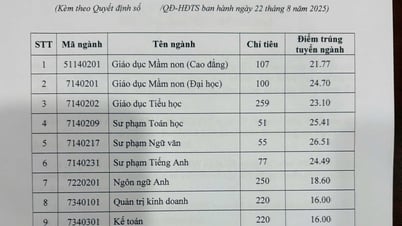- The rate of giving birth to a third child or more in Lang Son province is showing signs of increasing. Faced with this situation, the health sector needs to step up propaganda activities to raise awareness and change people's behavior about giving birth to a third child in order to improve population quality.
In the first 8 months of 2025, in the province, 677/4,812 children born were the third child or more, accounting for 14%.
Ms. Hoang Thi Mien, a specialized officer of Khanh Khe Commune's Population Department, said: In the first 8 months of 2025, the whole commune had 21/87 children born as the third child or more, accounting for 24.1%, a sharp increase compared to the same period last year (the first 8 months of 2024 was 19.8%). This shows that the situation of giving birth to the third child or more is still complicated. The main reason is that a part of the people still hold the concept of "having many children to make the family happy, having many children to rely on when they are old", or wanting to have more children to have both boys and girls.
According to Ms. Mien, although the population collaborators have actively gone to each village to propagate and mobilize families to only have 2 children, and organized many communication sessions integrated into village meetings, association activities, and mass organizations, etc., the impact is still not really strong.

In addition, one of the reasons for the increasing trend of having a third child is that from March 20, 2025, according to Instruction No. 15-HD/UBKTTW, party members, cadres, civil servants, and public employees who have a third child or more will no longer be disciplined as before. This change has partly created a more comfortable mentality among a number of cadres and party members and spread to the people. When the regulations changed, many families decided to have more children, especially those who wanted a son.
Ms. HNM, Luong Van Tri Ward shared: As a party member, I understand very well the population policy, each family should only stop at 2 children to have better conditions for care and education. However, based on personal and family wishes, my husband and I still decided to have a third child, with the hope that when we are old, we will have children to take turns taking care of us. Previously, if we had a third child, we would be subject to disciplinary action, so I was still hesitant, but now that the regulation no longer requires disciplinary action, I feel more comfortable.
The situation of having a third child or more leaves many consequences. First of all, it increases pressure on population work, affecting the goal of improving population quality and gender balance at birth. Given the above situation, promoting propaganda and raising awareness to reduce the number of third children or more is an urgent requirement, in order to change thinking and reproductive habits and contribute to bringing population work - family planning into depth and sustainability.
Ms. Vu Van Anh, Deputy Head of the Population Department, Department of Health said: To reduce the rate of having 3 or more children, in the coming time, we will advise the leaders of the Department of Health to issue documents requesting sectors, organizations, and local authorities to synchronously deploy many solutions, including strengthening communication activities in diverse forms such as: through newspapers, social networks, grassroots radio, oral propaganda... The propaganda content will focus on the main subjects including: couples of childbearing age, cadres, party members... thereby aiming to change people's awareness, especially in remote areas, where the idea of having many children is still heavy. At the same time, expand family planning services, creating conditions for people to conveniently access safe and effective contraceptive methods. Besides, promoting the exemplary role of cadres and party members is also very important, thereby creating a spreading effect, contributing to reducing the rate of third and higher births in the coming years.
In addition to the above solutions, the health sector also focuses on implementing support policies according to State regulations. Specifically, Decree No. 39/2015/ND-CP dated April 27, 2015 of the Government stipulating support policies for poor ethnic minority women when giving birth in accordance with population policy is being implemented in many communes and wards. This is a measure to encourage families to have 2 children, not to have a third child or more, while contributing to improving the quality of life and reducing the economic burden for poor households in ethnic minority areas.
Reducing the number of third and subsequent children is an important goal in population and family planning work. With the province's average birth rate currently reaching 2.22 children/woman (2024), approaching the replacement level (2.1 children/woman), limiting the number of third children will not only help maintain a reasonable birth rate, but also directly improve population quality. This is not only an immediate task but also a long-term solution, contributing to ensuring social security and sustainable development of the locality. For this work to be effective, it requires the synchronous and drastic participation of the entire political system, the exemplary leadership of cadres and party members, and above all, a change in awareness and thinking of each family and each person, thereby contributing to improving population quality in the area.
Source: https://baolangson.vn/can-day-manh-tuyen-truyen-giam-sinh-con-thu-3-5056709.html




![[Photo] President Luong Cuong receives delegation of the Youth Committee of the Liberal Democratic Party of Japan](https://vphoto.vietnam.vn/thumb/1200x675/vietnam/resource/IMAGE/2025/8/22/2632d7f5cf4f4a8e90ce5f5e1989194a)





























































































Comment (0)